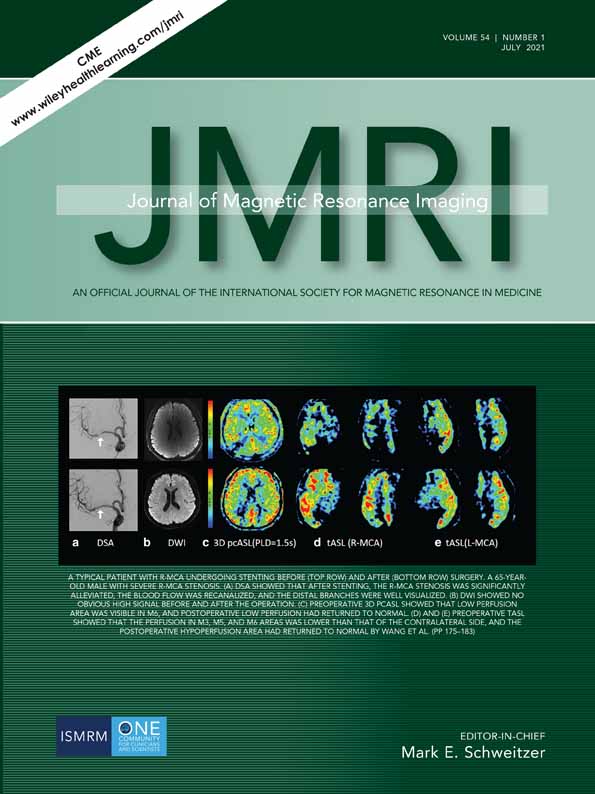Cine MRI detects elevated left heart pressure in pulmonary hypertension
Abstract
Cine magnetic resonance imaging (MRI) is an emerging modality for evaluating left ventricular (LV) motion/deformation patterns, which may have potential to identify LV dysfunctions underlying postcapillary pulmonary hypertension (PH). The aim of this study was to test the hypothesis that cine MRI-derived LV motion/deformation indices can be used to identify an elevated left heart pressure in PH. This was a retrospective study, which included 26 precapillary and 28 postcapillary PH patients (23 males, 58.9 ± 13.5 years old). All patients underwent right heart catheterization (the “reference standard”) and cardiac MRI. Balanced steady-state free precession cine sequence acquired at 1.5 T was used. Cine MRI datasets were analyzed by using heart deformation analysis. LV motion/deformation indices were measured through 25 phases within a cardiac cycle. Peak LV displacement, velocity, strain, and strain rates at systole, early and late diastole were compared between the two patient groups using t-tests. The Pearson correlation coefficient (r) was used to investigate the association between cine MRI-derived indices and pulmonary capillary wedge pressure (PCWP). Multivariable linear and logistic regression models were applied to assess the ability of MRI-derived parameters to predict PCWP and postcapillary PH. Compared to 26 precapillary PH patients, the 28 postcapillary PH patients had lower peak late radial diastolic displacement (0.43 ± 0.19 cm vs. 0.64 ± 0.18 cm) and velocity (12.2 ± 5.8 mm/s vs. 18.9 ± 5.6 mm/s) and peak late radial (52.1 ± 32.7%/s vs. 97.1 ± 38%/s) and circumferential (38 ± 19.8%/s vs. 63.1 ± 22.9%/s) strain rates. PCWP was correlated with peak late radial diastolic displacement (r = −0.54) and velocity (r = −0.57) and peak late radial (r = −0.63) and circumferential diastolic (r = −0.63) strain rates. Peak late radial strain rate could predict PCWP (β = −0.09) and postcapillary PH (β = −0.036). All p < 0.05. Cine MRI-derived LV late diastolic motion/deformation properties can be used to estimate elevated left heart pressure in PH.
Level of Evidence
3
Technical Efficacy Stage
1
CONFLICT OF INTEREST
This study was supported by Bayer Pharmaceutical. The grant was paid to the institution not to individual investigators. James C. Carr has disclosure: Siemens: research grant to institution; advisory board. Bayer: research grant to institution; advisory board; speaker. Bracco: advisory board. Guerbet: research grant to institution. Other authors have nothing to disclose.




